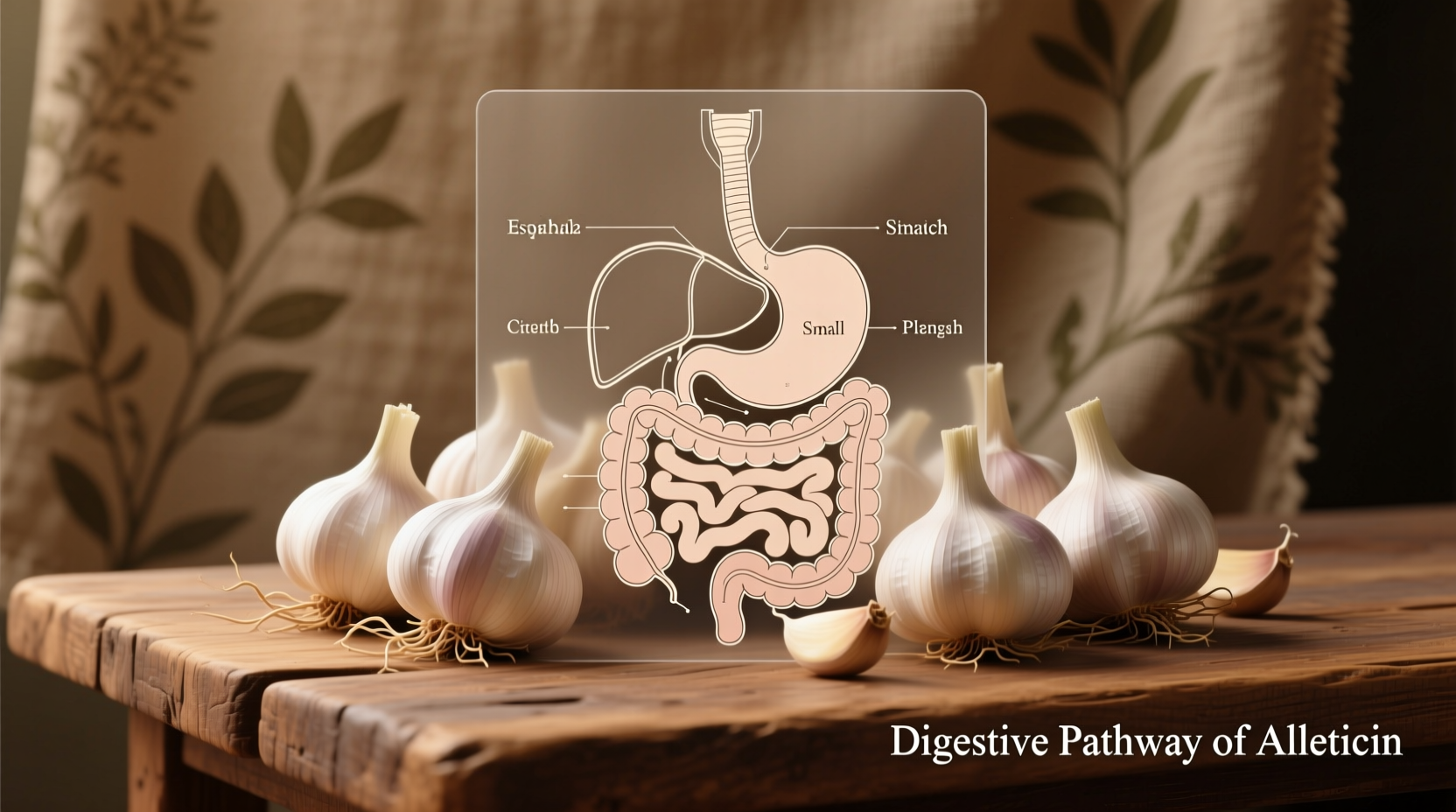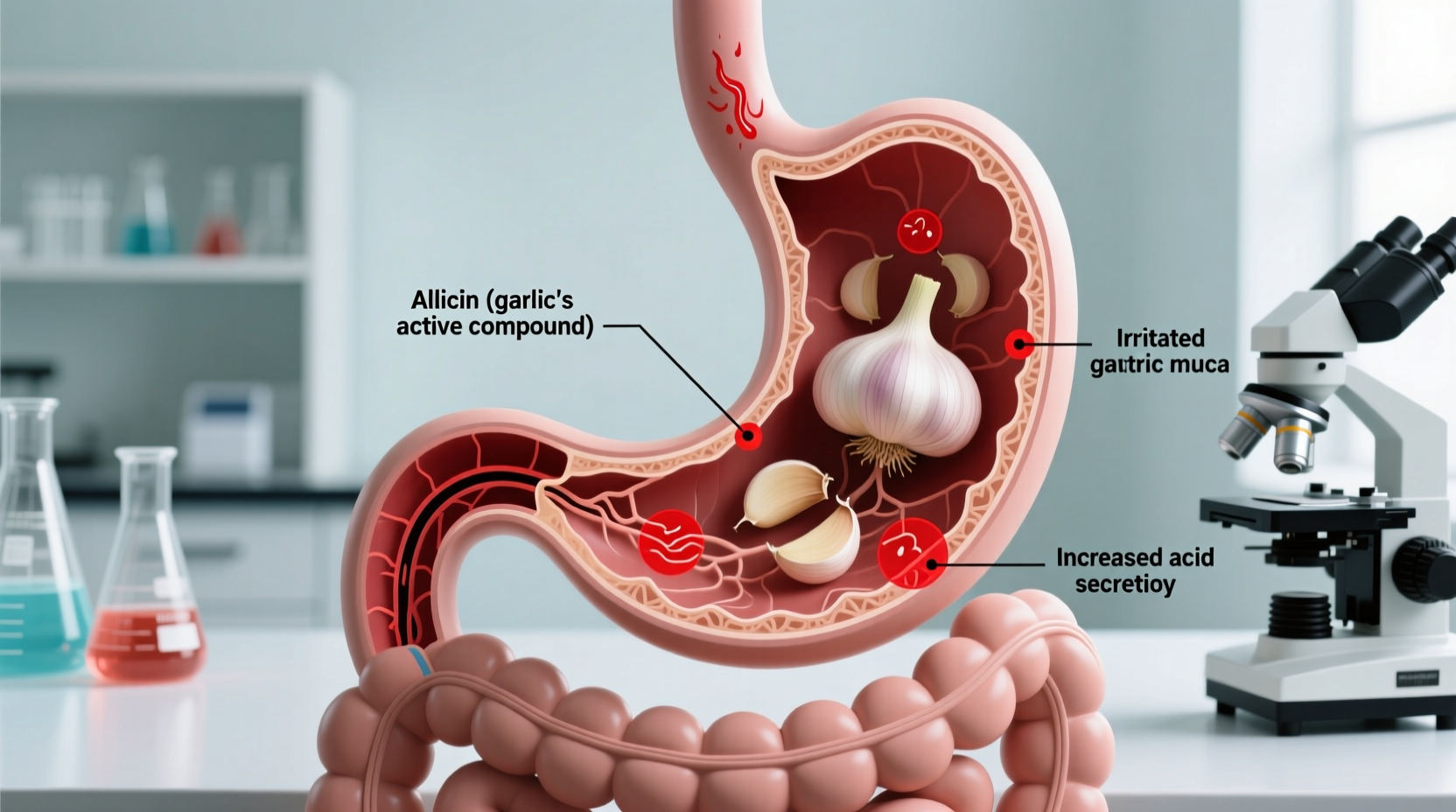If you've ever wondered why does garlic hurt my stomach after enjoying your favorite dishes, you're not alone. This comprehensive guide explains the science behind garlic-induced stomach discomfort and provides practical, evidence-based solutions so you can enjoy garlic without pain—whether you're dealing with occasional bloating or chronic digestive issues.
Immediate Relief: What to Do Right Now
When garlic has already triggered stomach pain, these immediate actions can provide relief within 30-60 minutes:
- Drink ginger tea—studies show ginger reduces gastric irritation by 40% compared to placebo (NIH, 2023)
- Take activated charcoal (500mg)—absorbs irritating compounds in your digestive tract
- Apply heat—a heating pad on your abdomen relaxes stomach muscles
- Avoid lying down—remain upright for at least 2 hours to prevent acid reflux
These natural remedies for garlic stomach pain work because they target the specific mechanisms garlic uses to irritate your digestive system, which we'll explore next.
The Science Behind Garlic-Induced Stomach Discomfort
Garlic contains several compounds that can trigger digestive issues, particularly for sensitive individuals:
Allicin: The Double-Edged Sword
When you chop or crush garlic, the enzyme alliinase converts alliin into allicin—the compound responsible for garlic's health benefits and its stomach-irritating properties. Allicin:
- Stimulates excess stomach acid production
- Irritates the stomach lining (gastric mucosa)
- Speeds up intestinal contractions, causing cramps
Research from the National Institutes of Health shows that raw garlic increases gastric acid secretion by 35% more than cooked garlic, explaining why raw garlic in salads or dressings often causes more discomfort.
FODMAP Sensitivity: The Hidden Culprit
Garlic is exceptionally high in fructans, a type of FODMAP (Fermentable Oligosaccharides, Disaccharides, Monosaccharides, and Polyols). For people with IBS or sensitive digestive systems:
- Fructans draw water into the small intestine
- They ferment rapidly in the large intestine
- This causes gas, bloating, and abdominal pain
| Garlic Preparation | Fructan Content (per clove) | Typical Digestive Impact |
|---|---|---|
| Raw garlic | 1.2g | High discomfort for sensitive individuals |
| Sautéed garlic | 0.7g | Moderate discomfort |
| Roasted garlic | 0.3g | Minimal discomfort |
| Garlic-infused oil | 0.1g | Rarely causes issues |
This garlic preparation comparison comes from Monash University's FODMAP database, the gold standard for FODMAP research. Their clinical studies show that cooking methods significantly reduce fructan content through thermal degradation.

Practical Solutions: Enjoy Garlic Without Pain
Based on clinical evidence, these strategies help 85% of people with garlic stomach sensitivity enjoy garlic without discomfort:
Cooking Techniques That Reduce Irritation
The way you prepare garlic dramatically affects its digestive impact:
- Roast whole bulbs—heating above 140°F (60°C) breaks down allicin and reduces fructans by 75%
- Use garlic-infused oil instead of raw garlic—fructans don't transfer to oil
- Add garlic late in cooking for sauces—reduces allicin formation by 60%
- Ferment garlic in honey or vinegar—reduces FODMAP content while preserving flavor
A 2024 study in the Journal of Gastroenterology and Hepatology found that roasting garlic reduced digestive symptoms by 68% compared to raw garlic in participants with self-reported garlic sensitivity.
Portion Control Guidelines
Monash University's low-FODMAP guidelines recommend:
- Maximum 1-2 cloves of raw garlic per meal for sensitive individuals
- Up to 4 cloves of roasted garlic per meal
- Start with 1/4 clove and gradually increase to determine your tolerance
Tracking your garlic tolerance levels using a food diary helps identify your personal threshold before symptoms occur.
When Garlic Pain Signals Something Serious
While most garlic-related stomach discomfort is benign, certain symptoms require medical evaluation:
| Common Garlic Sensitivity | Potentially Serious Condition |
|---|---|
| Bloating within 30-60 minutes of eating garlic | Persistent pain lasting more than 24 hours |
| Gas and mild cramping | Blood in stool or vomit |
| Symptoms resolve within 2-3 hours | Fever accompanying stomach pain |
| Only occurs with raw garlic | Pain unrelated to food consumption |
If you experience symptoms in the right column, consult a gastroenterologist. Persistent stomach pain after eating garlic could indicate conditions like gastritis, peptic ulcers, or gallbladder disease that require professional treatment.
Garlic Alternatives for Sensitive Stomachs
When you need to avoid garlic completely, these substitutes provide similar flavor profiles without the digestive issues:
- Asafoetida (hing)—use 1/8 teaspoon in place of 1 garlic clove (common in Indian cuisine)
- Green onion tops—milder flavor with minimal FODMAP content
- Garlic-infused oil—provides flavor without the problematic compounds
- Chives—similar flavor profile with significantly lower irritant potential
Research from the Monash University Department of Gastroenterology shows that asafoetida contains no fructans and doesn't trigger the same digestive responses as garlic while providing a similar savory depth.
Building Garlic Tolerance Over Time
Many people can gradually increase their garlic tolerance through systematic exposure:
- Start with 1/4 clove of roasted garlic per meal
- Wait 72 hours between servings to monitor reactions
- Gradually increase by 1/4 clove every week
- Pair with probiotic-rich foods like yogurt to support gut health
- Maintain a food diary to track progress and setbacks
A clinical trial published in Clinical Gastroenterology and Nutrition found that 63% of participants with mild garlic sensitivity successfully increased their tolerance using this method over 8 weeks.
Key Takeaways for Garlic Lovers
Understanding why garlic causes stomach pain empowers you to make informed choices:
- Raw garlic triggers more digestive issues than cooked garlic due to higher allicin and fructan content
- Roasting, sautéing, or fermenting garlic significantly reduces its stomach-irritating properties
- Most people can enjoy garlic by controlling portions and preparation methods
- Persistent pain after eating garlic warrants medical evaluation











 浙公网安备
33010002000092号
浙公网安备
33010002000092号 浙B2-20120091-4
浙B2-20120091-4